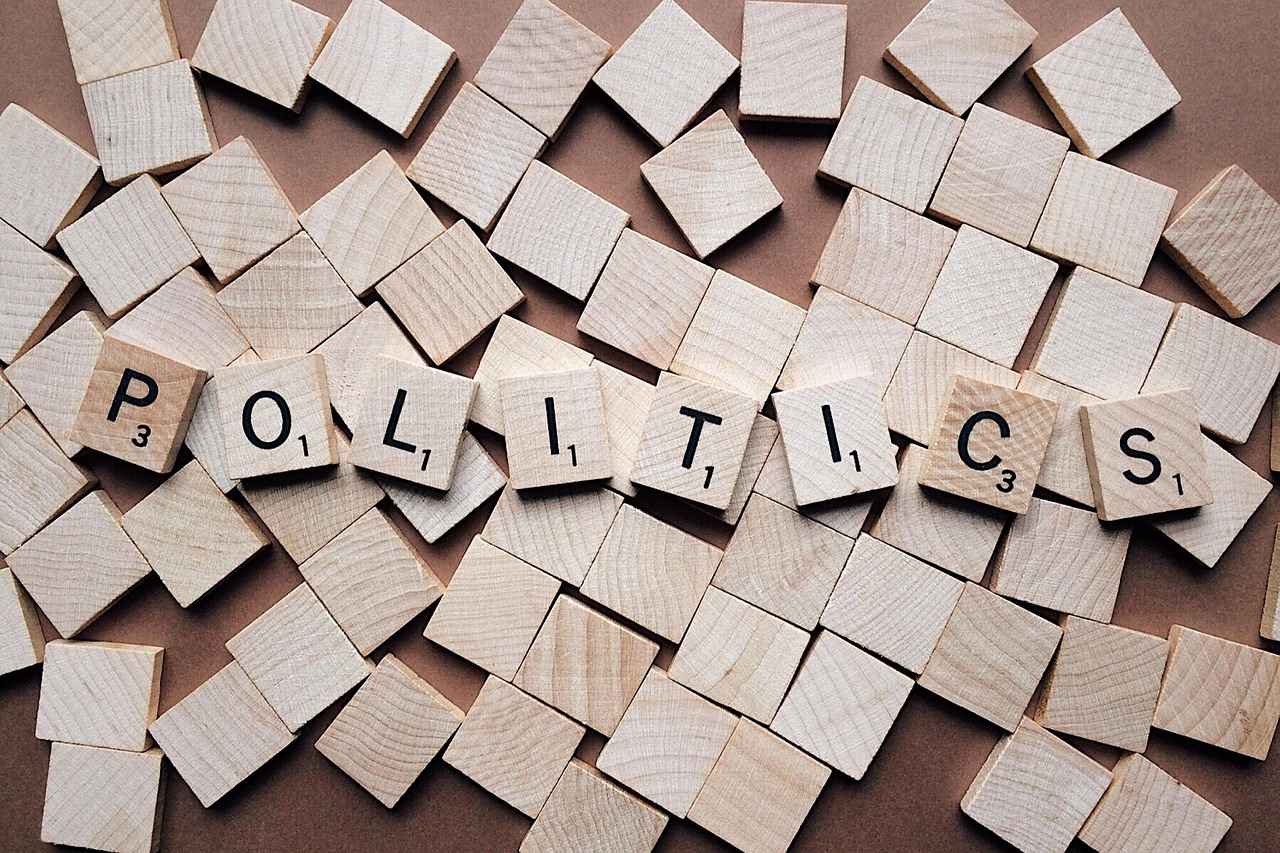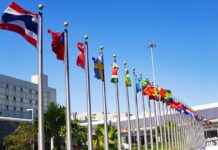This article explores the political landscape for Indian Americans in New York, examining barriers to political power, the impact of discrimination, and potential pathways for increased representation and engagement.
Understanding Political Discrimination
Political discrimination encompasses unfair treatment based on race, ethnicity, or national origin, which can significantly hinder political participation. For Indian Americans in New York, this can manifest in various forms, including voter suppression, lack of access to political resources, and underrepresentation in government. Understanding these challenges is crucial for recognizing the broader implications on community engagement and representation.
The Historical Context of Indian Americans in Politics
The journey of Indian Americans in the U.S. political landscape has evolved over the years. From early immigrants facing exclusionary laws to the emergence of influential leaders, the history is marked by resilience. Key milestones, such as the election of the first Indian American to Congress, have paved the way for greater involvement, yet systemic barriers remain.
Current Demographics of Indian Americans in New York
Indian Americans represent a significant and growing demographic in New York. Recent statistics indicate that they constitute a large portion of the state’s Asian American population. Understanding their socio-economic background, education levels, and geographic distribution can illuminate the factors that influence their political engagement and representation.
Barriers to Political Participation for Indian Americans
Despite their increasing numbers, Indian Americans encounter several barriers that impede political participation. Language barriers can limit access to information, while cultural differences may hinder community mobilization. Additionally, socio-economic factors such as income disparity and lack of political networks further complicate their engagement in the political process.
The Role of Community Organizations
Community organizations are instrumental in advocating for the rights of Indian Americans and facilitating political engagement. These organizations provide essential resources, including voter education and advocacy training, which empower individuals to participate actively in the political arena. Their efforts help to bridge the gap between the community and political institutions.
Case Studies of Political Discrimination
Examining specific instances of political discrimination faced by Indian Americans reveals the systemic issues at play. For instance, cases involving voter intimidation or gerrymandering highlight the challenges that can disenfranchise communities. These case studies serve as critical reminders of the ongoing struggle for equitable political representation.
Impact of Media Representation
Media representation plays a crucial role in shaping public perception and influencing political engagement. The portrayal of Indian Americans in the media often lacks nuance, which can perpetuate stereotypes and undermine their political aspirations. Analyzing these representations can provide insights into the broader societal attitudes that affect political power.
Legal Framework Against Discrimination
Understanding the legal protections against political discrimination is vital for Indian Americans seeking to navigate the political landscape. Key laws, such as the Voting Rights Act, provide a framework for challenging discriminatory practices. Familiarity with these protections can empower individuals to advocate for their rights effectively.
Political Engagement Strategies for Indian Americans
To overcome existing barriers, Indian Americans must adopt effective political engagement strategies. Grassroots organizing, coalition-building with other marginalized communities, and leveraging technology for mobilization are essential approaches. These strategies can enhance visibility and amplify their voices in the political discourse.
Role of Education in Political Empowerment
Education serves as a powerful tool for political empowerment within the Indian American community. Initiatives aimed at increasing political awareness and civic education can foster a more informed electorate. By investing in educational programs, the community can enhance its capacity to engage in the political process.
Success Stories of Indian American Politicians
Highlighting the success stories of Indian American politicians can serve as inspiration for others within the community. Figures such as Kamala Harris and Nikki Haley have navigated the political landscape successfully, demonstrating that representation is possible. Their journeys offer valuable lessons for aspiring leaders.
Future Trends in Indian American Political Engagement
As the political landscape continues to evolve, emerging trends indicate a shift in engagement among Indian Americans. The increasing involvement of younger generations, coupled with changing demographics, suggests a potential for greater representation and influence in politics. Understanding these trends is essential for fostering a more inclusive political environment.
Building Alliances for Greater Political Power
Collaboration with other marginalized groups can significantly amplify the political power of Indian Americans. Building alliances and coalitions can address common challenges and enhance representation. By working together, these communities can create a more unified front in advocating for their rights and interests.
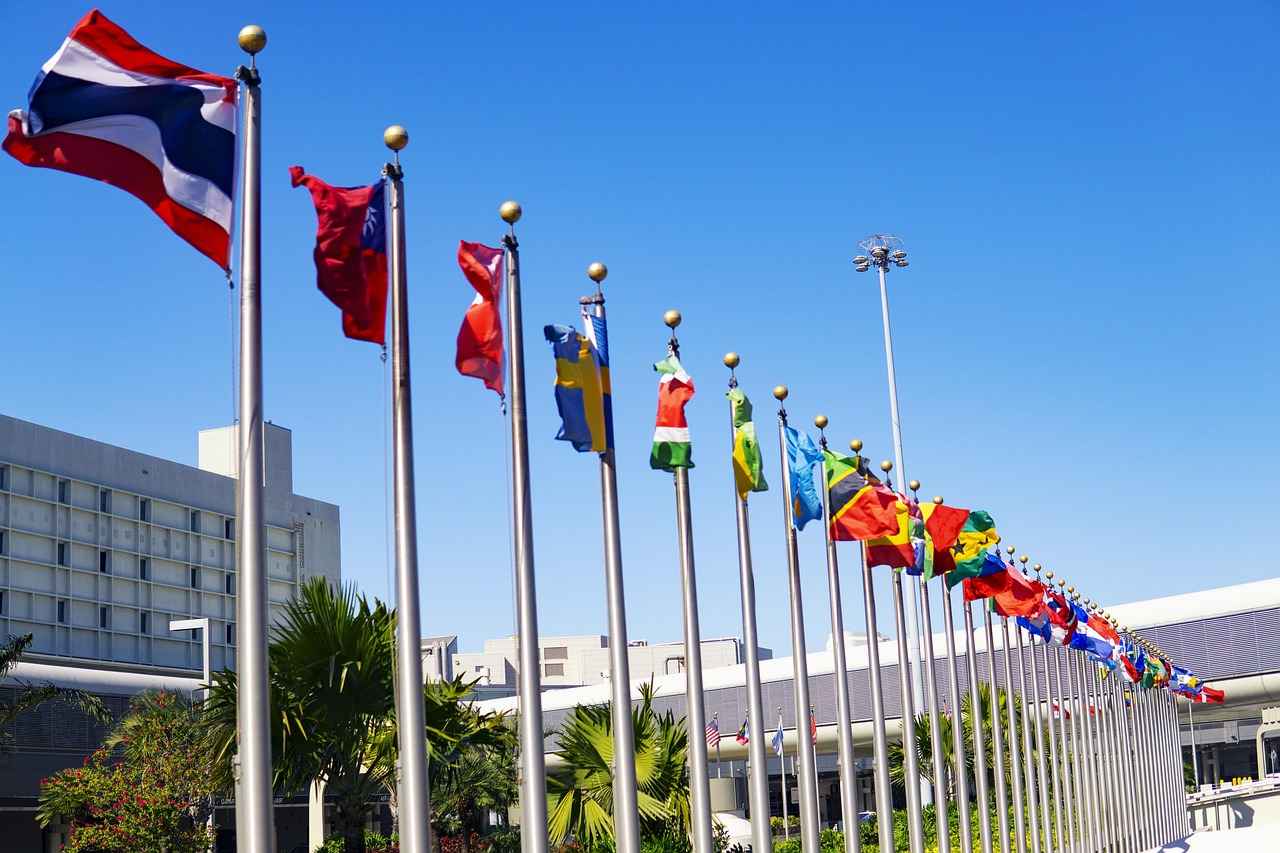
Understanding Political Discrimination
Political discrimination is a pressing issue that affects many communities across the United States, including the Indian American population in New York. This form of discrimination encompasses unfair treatment based on race, ethnicity, or national origin, which can severely hinder political participation and representation. Understanding the nuances of political discrimination is crucial for addressing these challenges and fostering a more inclusive political environment.
At its core, political discrimination manifests in various ways, including systemic biases within political parties, discriminatory policies, and a lack of representation in key political positions. This unfair treatment can lead to disenfranchisement, where affected groups feel excluded from the political process, ultimately impacting their ability to influence policies that affect their lives.
One significant aspect of political discrimination is the barriers to voting. For instance, language obstacles can prevent non-English speakers from fully understanding the voting process, thereby limiting their participation. Additionally, voter ID laws and other regulations may disproportionately affect minority groups, making it difficult for them to exercise their right to vote.
Furthermore, political discrimination can also be observed in the media representation of minority communities. The portrayal of Indian Americans and other ethnic groups in the media often shapes public perception and can influence political engagement. Negative stereotypes or lack of visibility can reinforce biases, making it even harder for these communities to gain political traction.
Moreover, the implications of political discrimination extend beyond individual experiences. When entire communities are marginalized, it leads to underrepresentation in legislative bodies, which can result in policies that do not address their unique needs. This creates a cycle of disenfranchisement that can persist across generations.
Addressing political discrimination requires a multifaceted approach. It is essential to raise awareness about the issue and promote inclusive policies that encourage participation from all segments of the population. Community organizations play a vital role in this effort by mobilizing individuals, providing education about political processes, and advocating for equitable representation.
In conclusion, understanding political discrimination is crucial for fostering a more inclusive political landscape. By recognizing the barriers faced by marginalized communities, we can work towards creating a political environment that is representative of the diverse population in New York and beyond.
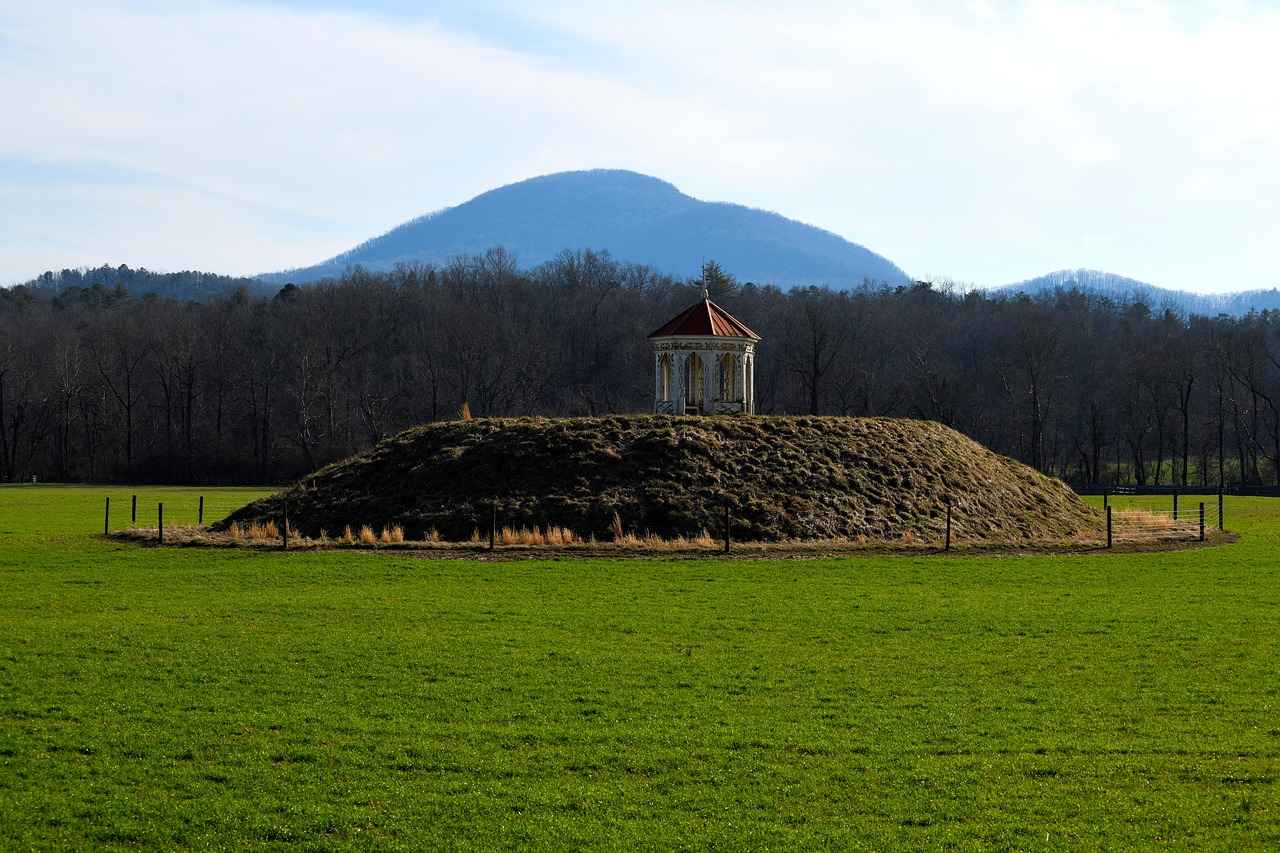
The Historical Context of Indian Americans in Politics
Indian Americans have a rich and complex history in the political landscape of the United States, particularly in New York. Their journey is marked by significant milestones that reflect both achievements and challenges. Understanding this historical context is crucial for grasping the current political dynamics and the ongoing struggle for representation.
The story of Indian Americans in U.S. politics began in the early 20th century, with the first significant wave of immigration occurring in the 1900s. Many early Indian immigrants were laborers who settled in agricultural areas, particularly in California. However, the political landscape was unwelcoming. The Immigration Act of 1917 imposed severe restrictions on Asian immigrants, effectively curtailing the growth of the Indian American community.
Despite these challenges, Indian Americans began to organize politically. The formation of organizations such as the Indian National Congress in the U.S. during the 1920s marked a pivotal moment. These organizations aimed to advocate for the rights of Indians living abroad and to support India’s struggle for independence. This activism laid the groundwork for future political engagement.
After India gained independence in 1947, the political landscape for Indian Americans began to shift. The 1965 Immigration and Nationality Act significantly increased the number of Indian immigrants, leading to a more diverse and politically active community. Indian Americans began to enter various professional fields, which in turn facilitated their entry into politics.
Throughout the late 20th century, Indian Americans started to gain visibility in local and state politics. The election of Dalip Singh Saund in 1956 as the first Indian American to serve in the U.S. Congress was a landmark achievement. His success inspired future generations to pursue political careers, yet systemic barriers persisted, making it difficult for many to navigate the political arena.
In New York, the political involvement of Indian Americans has been shaped by the state’s diverse demographic landscape. The community has grown significantly, particularly in areas like Queens and Nassau County. However, the historical context of discrimination and underrepresentation has continued to challenge their political aspirations. This has led to the establishment of numerous community organizations aimed at increasing political engagement and representation.
As the 21st century progresses, Indian Americans are increasingly asserting their presence in politics, with notable figures such as Raja Krishnamoorthi and Pramila Jayapal breaking barriers at the federal level. Their success stories serve as an inspiration for younger generations, emphasizing the importance of political participation and community organizing.
In summary, the historical context of Indian Americans in politics reveals a journey of resilience and determination. From early struggles against discriminatory policies to the current push for greater representation, their political evolution in New York is a testament to the community’s commitment to shaping the political landscape.

Current Demographics of Indian Americans in New York
Understanding the demographics of Indian Americans in New York is crucial for analyzing their political influence. With a population exceeding 400,000, Indian Americans represent one of the fastest-growing ethnic groups in the state. This section provides statistical insights into their population size, distribution, and socio-economic factors affecting political engagement.
According to the latest census data, Indian Americans constitute approximately 2.5% of New York’s total population. This demographic is primarily concentrated in urban areas, with significant populations in Queens, Brooklyn, and Manhattan. The neighborhoods of Jackson Heights and Flushing in Queens are particularly notable for their vibrant Indian communities, showcasing a rich tapestry of cultural heritage.
In terms of socio-economic status, Indian Americans in New York exhibit diverse characteristics. Many are highly educated, with a significant percentage holding advanced degrees in fields such as technology, healthcare, and finance. According to reports, over 70% of Indian Americans in New York have a bachelor’s degree or higher, contributing to their higher median household income, which is approximately $100,000, compared to the state average of around $70,000.
However, despite their educational achievements and economic contributions, Indian Americans often face unique challenges that impact their political engagement. Language barriers, cultural differences, and a lack of representation in political offices can hinder their participation in the democratic process. Many Indian Americans may feel disconnected from mainstream political discourse, which can lead to lower voter turnout rates compared to other ethnic groups.
Additionally, the generational divide within the Indian American community plays a significant role in political engagement. Younger Indian Americans, particularly first-generation immigrants, tend to be more politically active and aware of issues affecting their community. They are increasingly leveraging social media and digital platforms to organize, educate, and mobilize their peers.
Community organizations and advocacy groups are vital in bridging the gap between Indian Americans and the political landscape. These organizations provide resources, conduct outreach programs, and encourage civic participation among Indian Americans. They play a crucial role in raising awareness about the importance of voting and political representation.
Overall, the demographics of Indian Americans in New York reflect a complex interplay of cultural richness, educational attainment, and socio-economic diversity. Understanding these factors is essential for analyzing their political influence and identifying pathways for greater engagement and representation in the political arena.
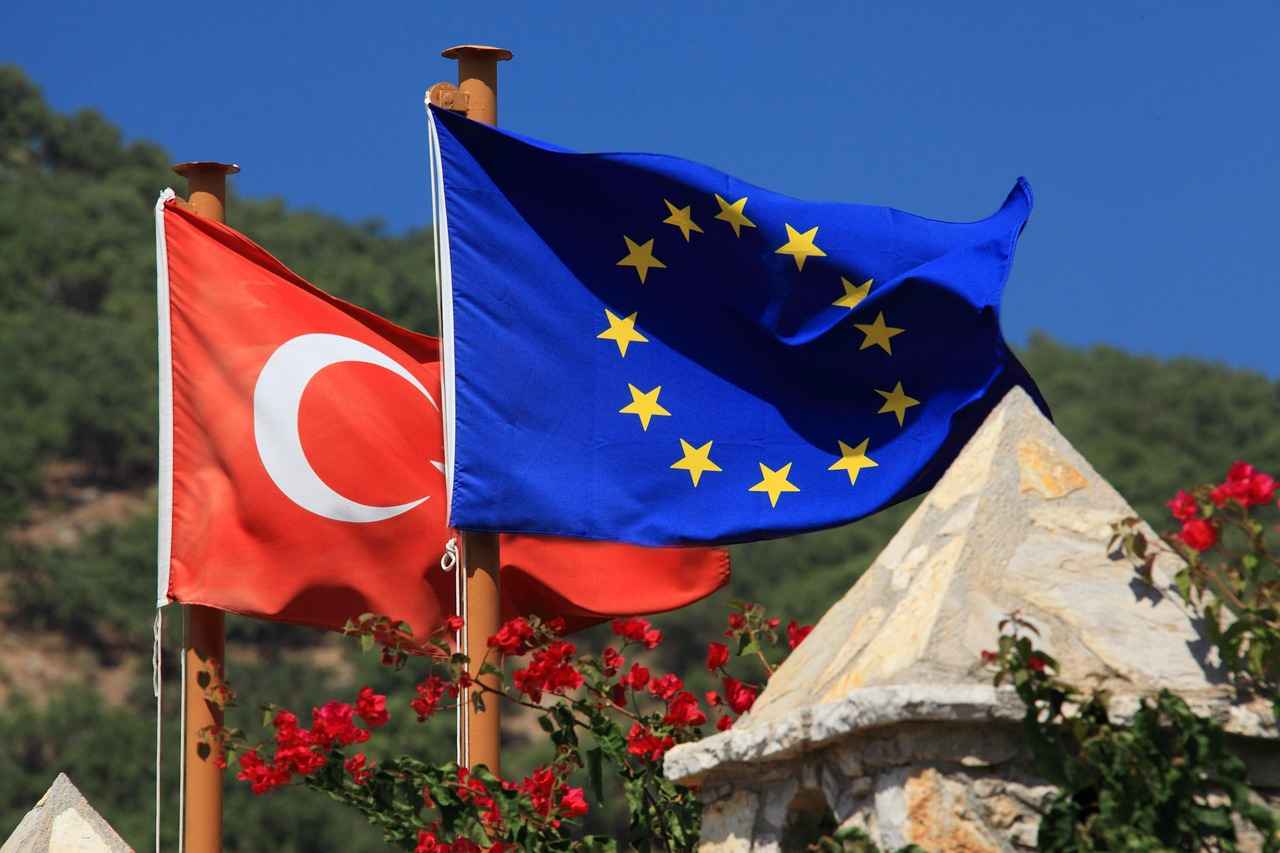
Barriers to Political Participation for Indian Americans
Despite the increasing population of Indian Americans in New York, they encounter a multitude of barriers that significantly impede their political participation. This section will explore the systemic challenges that contribute to this issue, including language barriers, cultural differences, and various socio-economic factors.
One of the most prominent challenges faced by Indian Americans is the language barrier. Many individuals in this community may not be fluent in English, which can create difficulties in understanding political processes, engaging in discussions, and accessing vital information about voting and civic duties. This lack of proficiency can lead to feelings of exclusion and discourage participation in political activities. Furthermore, the absence of multilingual resources can exacerbate this issue, leaving non-English speakers at a disadvantage.
Cultural differences also play a significant role in political engagement. The Indian American community is diverse, comprising various ethnicities, languages, and traditions. This diversity can lead to fragmented political interests and priorities, making it challenging to unite under a common political agenda. Additionally, cultural norms may discourage open political discourse, particularly among first-generation immigrants who may be accustomed to a more reserved approach to politics. This cultural hesitance can result in lower participation rates in political events and elections.
Moreover, socio-economic factors significantly impact political participation. Many Indian Americans may be focused on economic stability, working long hours in demanding jobs, and prioritizing their families over political involvement. This economic pressure can limit their ability to engage in political activities, such as attending town hall meetings or participating in campaigns. Furthermore, individuals from lower socio-economic backgrounds may feel that their voices are not valued, leading to apathy and disengagement from the political process.
Community organizations play a crucial role in addressing these barriers by providing resources, support, and education to empower Indian Americans politically. These organizations often offer language assistance, cultural training, and workshops aimed at increasing political awareness. By fostering a sense of community and belonging, they can help mitigate some of the challenges faced by Indian Americans in New York.
In conclusion, while Indian Americans in New York are increasing in number, their political participation is hindered by a range of barriers. Addressing these challenges requires a multifaceted approach that includes improving language accessibility, embracing cultural diversity, and recognizing the socio-economic realities of the community. By tackling these issues head-on, it is possible to enhance the political engagement of Indian Americans and ensure their voices are heard in the democratic process.

The Role of Community Organizations
Community organizations are essential in empowering and mobilizing the Indian American community politically. These organizations serve as a bridge between the community and political structures, providing a platform for individuals to engage in the political process. This section explores the multifaceted roles that these organizations play in advocating for rights, offering resources, and fostering political engagement among Indian Americans.
One of the primary functions of community organizations is to advocate for rights on behalf of Indian Americans. These organizations often engage in lobbying efforts to influence legislation that affects the community. By organizing campaigns and rallies, they raise awareness about critical issues such as immigration reform, education, and healthcare access. Through these advocacy efforts, community organizations work to ensure that the voices of Indian Americans are heard in the political arena.
Moreover, community organizations provide vital resources that facilitate political engagement. They often conduct workshops, seminars, and informational sessions aimed at educating community members about their rights and responsibilities as citizens. These initiatives help demystify the political process, making it more accessible to those who may feel disenfranchised or uninformed. By offering resources such as voter registration drives and information on local elections, these organizations empower individuals to participate actively in democracy.
Additionally, community organizations foster a sense of belonging and solidarity within the Indian American community. They create spaces for individuals to connect, share experiences, and discuss common challenges. This sense of community is crucial for mobilizing collective action. When individuals feel supported by their peers, they are more likely to engage in political activities, whether it be voting, attending town hall meetings, or running for office themselves.
Furthermore, many community organizations prioritize building alliances with other marginalized groups. By collaborating with different communities, they amplify their voices and address shared concerns. This coalition-building not only strengthens the political power of Indian Americans but also promotes broader social justice initiatives. Together, these organizations can tackle systemic issues that affect multiple communities, thereby enhancing their impact.
In summary, community organizations are instrumental in mobilizing Indian Americans politically. Through advocacy, resource provision, and community building, they enhance political engagement and empower individuals to assert their rights. As these organizations continue to grow and evolve, their role in shaping the political landscape for Indian Americans will undoubtedly remain significant.

Case Studies of Political Discrimination
Examining specific instances of political discrimination faced by Indian Americans can provide valuable insights into the broader issues affecting their political engagement and representation. This section presents several case studies that highlight the challenges and obstacles encountered by the Indian American community in the political arena.
- Case Study 1: The 2016 Election Cycle
During the 2016 election cycle, many Indian Americans reported experiencing racial profiling and discrimination at polling places in New York City. Instances of intimidation and questioning of their eligibility to vote were common. This created a climate of fear that discouraged many from exercising their right to vote. Reports indicated that individuals faced undue scrutiny simply due to their ethnic background, highlighting systemic issues within the electoral process.
- Case Study 2: Representation in Local Government
In 2018, a prominent Indian American candidate for a local city council seat faced significant backlash and discrimination during their campaign. Despite having a strong platform and community support, the candidate encountered negative portrayals in the media and was subjected to racially charged attacks from opponents. This case illustrates the barriers that Indian Americans face when seeking political office, often having to combat biases that undermine their qualifications and abilities.
- Case Study 3: Language Barriers and Voter Access
Language barriers have also emerged as a significant factor in political discrimination. Many Indian Americans, particularly recent immigrants, struggle with English proficiency, which can lead to miscommunication and exclusion from the political process. A study conducted in 2020 revealed that Indian Americans in predominantly non-English speaking neighborhoods faced challenges in accessing important voting information, which directly impacted their voter turnout rates.
- Case Study 4: Discrimination in Political Organizations
Involvement in political organizations has not been immune to discrimination. A 2021 survey found that Indian Americans often felt marginalized within broader political coalitions. Many reported feeling that their voices were not heard or valued, leading to a sense of alienation from political discourse. This lack of representation in political organizations can perpetuate feelings of disenfranchisement among the community.
These case studies underscore the complex nature of political discrimination faced by Indian Americans. By highlighting individual experiences, we can better understand the systemic barriers that hinder their political participation and representation. Addressing these issues is crucial for fostering a more inclusive political environment where all voices are heard and valued.

Impact of Media Representation
Media representation plays a critical role in shaping public perception and political engagement, particularly for marginalized communities. In the context of Indian Americans, the portrayal in various media outlets can significantly influence their political power and societal standing.
- Positive Representation: When Indian Americans are depicted in a positive light, it can foster a sense of pride within the community and encourage political participation. Positive portrayals often highlight successful Indian Americans in various fields, including politics, business, and the arts. This visibility can inspire younger generations to engage more actively in the political process.
- Negative Stereotypes: Conversely, negative media portrayals can perpetuate harmful stereotypes. Indian Americans may be depicted as outsiders or as a monolithic group, which can lead to misunderstandings and biases. Such representations can diminish their political influence by alienating them from broader political discussions and initiatives.
- Media Influence on Voter Perception: The way Indian Americans are portrayed in the media can also affect how they are perceived by the general public and political leaders. Misrepresentation can lead to a lack of awareness about the community’s contributions and needs, resulting in policies that do not reflect their interests.
- Role of Social Media: In today’s digital age, social media platforms have become powerful tools for representation. Indian Americans can share their narratives and challenge stereotypes through these platforms. Grassroots movements often gain traction online, enabling community members to mobilize and advocate for their rights.
- Impact on Political Engagement: The representation of Indian Americans in media can directly influence their political engagement. When the media covers issues pertinent to the community, it raises awareness and encourages participation in political processes. Conversely, a lack of coverage can lead to disengagement and apathy.
Case Studies of Media Representation
Examining specific case studies can provide insight into the impact of media representation on Indian Americans. For example, the portrayal of Indian American politicians in mainstream media can either enhance their visibility or contribute to their marginalization. When successful figures like Kamala Harris are highlighted, it can lead to increased political engagement within the community. However, when coverage focuses on negative incidents or stereotypes, it can have the opposite effect.
Conclusion
In conclusion, the impact of media representation on Indian Americans is profound and multifaceted. Positive portrayals can empower the community and enhance political engagement, while negative stereotypes can hinder their political power. As media continues to evolve, it is essential for Indian Americans to actively participate in shaping their narratives to ensure accurate representation and promote political engagement.
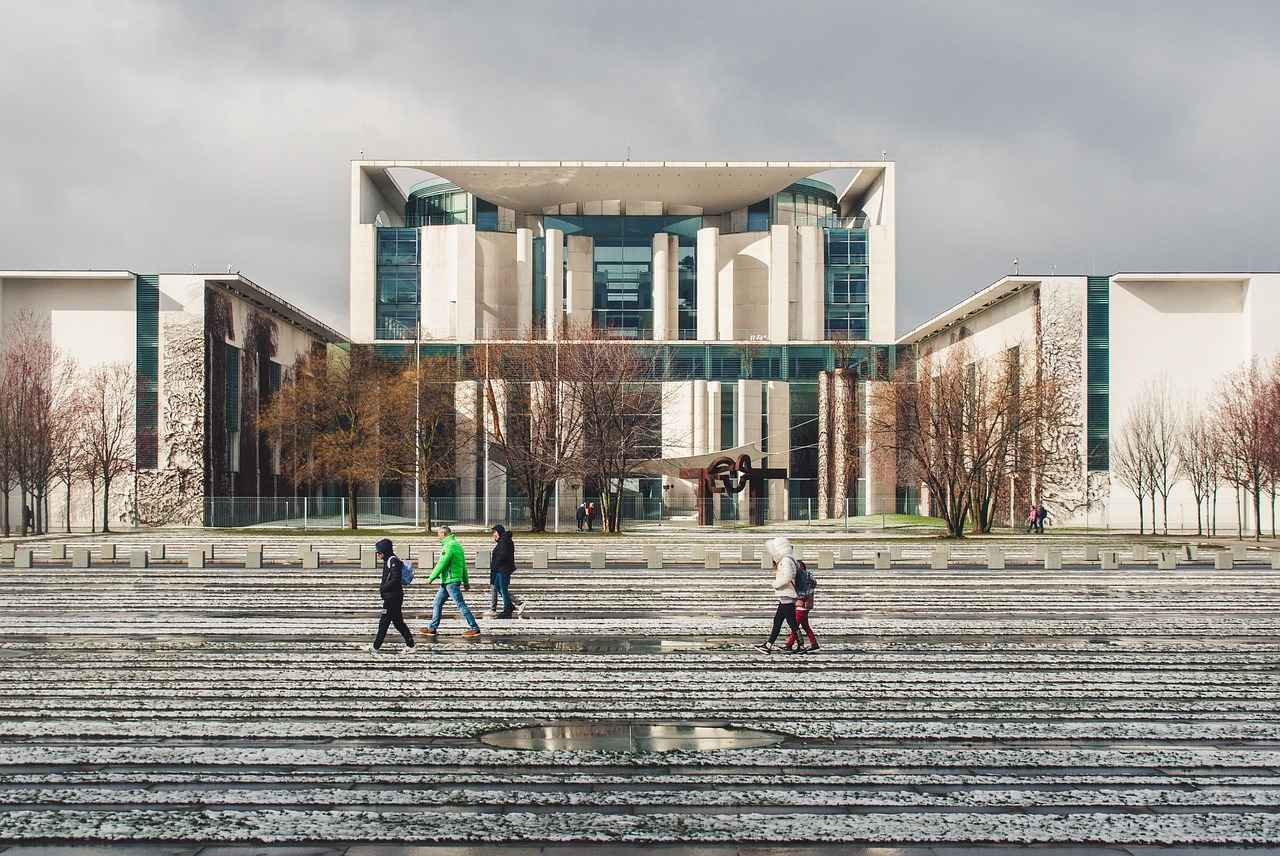
Legal Framework Against Discrimination
Understanding the legal protections against political discrimination is essential for Indian Americans. Discrimination in political processes can manifest in various forms, including exclusion from political discourse, unequal access to resources, and biased treatment based on race or ethnicity. This section outlines the relevant laws, policies, and frameworks that aim to protect against such discrimination and ensure fair participation in the political arena.
In the United States, several key laws provide a foundation for combating political discrimination. The Voting Rights Act of 1965 is one of the most significant pieces of legislation aimed at eliminating barriers to voting for marginalized groups, including racial and ethnic minorities. This act prohibits discriminatory voting practices and mandates federal oversight in jurisdictions with a history of discrimination. It serves as a crucial tool for Indian Americans to challenge any electoral practices that may disenfranchise them.
Another important legal framework is the Equal Protection Clause of the Fourteenth Amendment, which guarantees that no state shall deny any person within its jurisdiction the equal protection of the laws. This clause has been instrumental in various court cases where Indian Americans have sought redress against discriminatory practices that impede their political rights.
At the state level, New York has its own set of laws designed to protect against discrimination. The New York State Human Rights Law prohibits discrimination in various areas, including employment, housing, and public accommodations, which indirectly supports political engagement by ensuring that Indian Americans can participate in the political process without fear of retaliation or discrimination.
Moreover, various executive orders and policies at both federal and state levels have been implemented to promote diversity and inclusion in political representation. These initiatives aim to enhance the participation of underrepresented communities, including Indian Americans, by providing resources and support for political campaigns and civic engagement.
Community organizations also play a vital role in navigating the legal landscape. They often provide legal assistance and advocacy for individuals facing discrimination, helping to raise awareness about their rights and the available legal protections. Through workshops and outreach programs, these organizations empower Indian Americans to understand and utilize the legal frameworks that protect their political rights.
Additionally, the U.S. Department of Justice and the Equal Employment Opportunity Commission (EEOC) are federal agencies that monitor and enforce laws against discrimination. They investigate complaints and can take action against entities that violate anti-discrimination laws, providing another layer of protection for Indian Americans facing political discrimination.
In conclusion, the legal framework against political discrimination is multifaceted, encompassing federal and state laws, executive policies, and community advocacy. For Indian Americans, understanding these protections is crucial for navigating the political landscape and ensuring their voices are heard. By leveraging these legal tools, Indian Americans can work towards greater political representation and engagement, ultimately contributing to a more inclusive democracy.

Political Engagement Strategies for Indian Americans
To address the barriers faced by Indian Americans in New York, it is essential to develop effective political engagement strategies. This section will explore various approaches that can empower the community and enhance their political representation.
- Grassroots Organizing: Grassroots organizing is a powerful tool for mobilizing community members. By fostering connections at the local level, Indian Americans can build a strong network of supporters. This involves creating community meetings, town halls, and outreach programs that encourage participation. Engaging individuals in discussions about political issues that directly affect them can lead to increased awareness and involvement.
- Coalition-Building: Forming coalitions with other marginalized groups can amplify the voices of Indian Americans. By partnering with organizations that represent different ethnicities and communities, Indian Americans can work together to address common challenges. This collaborative approach can lead to more significant political influence and foster a sense of solidarity among diverse groups.
- Leveraging Technology: In today’s digital age, technology plays a crucial role in political mobilization. Utilizing social media platforms can help spread awareness about political events, share important information, and engage younger generations. Online campaigns can reach a broader audience, making it easier to mobilize supporters quickly and efficiently.
- Voter Education Programs: Educating the community about the voting process is vital. Many Indian Americans may not be familiar with how to register, where to vote, or the significance of their participation. Implementing voter education programs that provide clear information about the electoral process can empower individuals to exercise their rights and make informed decisions.
- Advocacy Training: Providing training sessions on advocacy skills can equip Indian Americans with the tools they need to engage effectively in the political process. These programs can cover topics such as how to communicate with elected officials, the importance of lobbying, and strategies for effective public speaking. Empowering individuals with these skills can enhance their confidence and ability to influence policy.
- Engagement in Local Politics: Encouraging Indian Americans to participate in local politics can create a more significant impact. This can involve running for local offices, participating in school boards, or joining neighborhood associations. Local engagement allows community members to address issues that directly affect their lives and fosters a sense of ownership in the political process.
By implementing these strategies, Indian Americans can overcome the barriers to political participation and work towards greater representation in New York. The combination of grassroots efforts, coalition-building, and the effective use of technology can create a robust framework for political engagement, ultimately leading to a more inclusive political landscape.
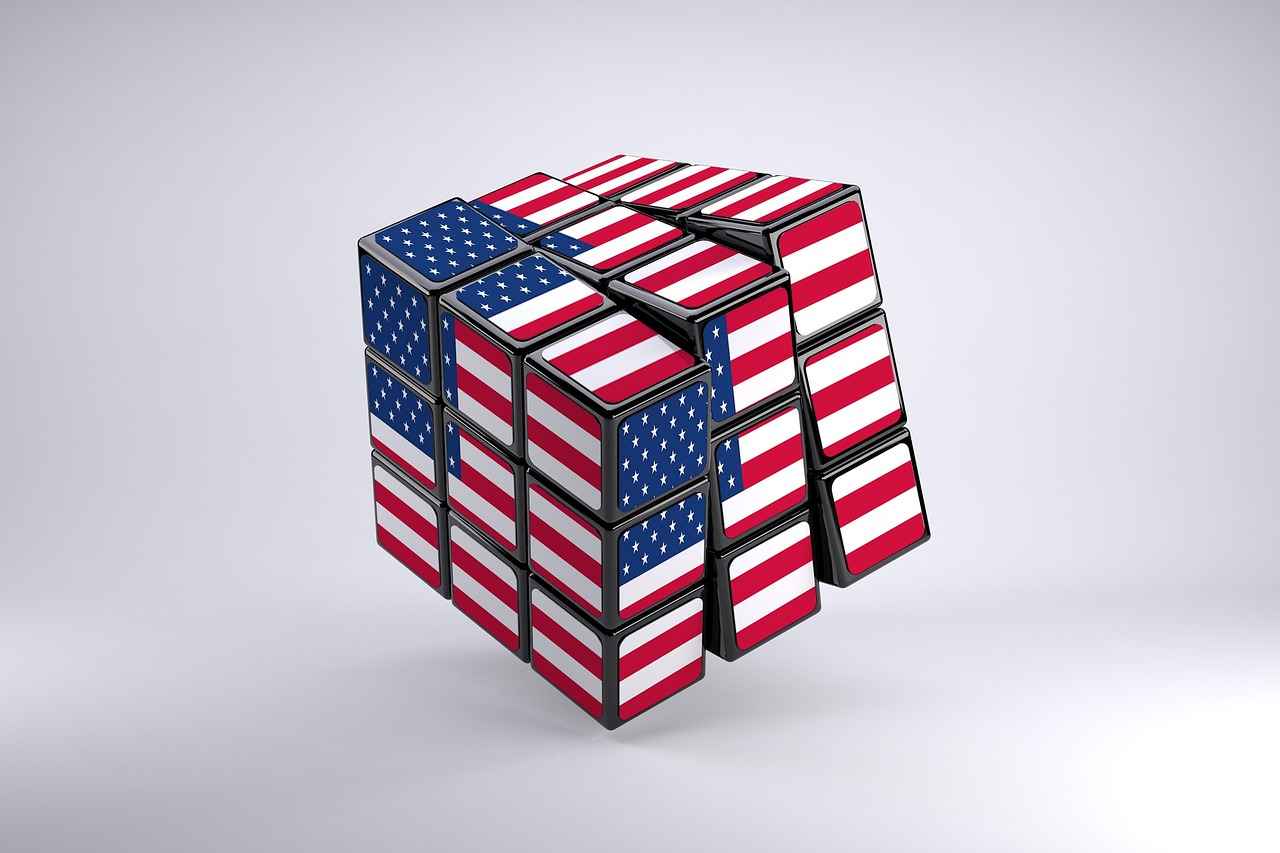
Role of Education in Political Empowerment
Education serves as a transformative force in society, particularly in the context of political empowerment. For Indian Americans in New York, educational initiatives can significantly enhance political awareness and participation, creating pathways to greater representation and influence in the political landscape.
One of the primary ways education fosters political empowerment is by equipping individuals with the knowledge necessary to navigate the political system. Understanding the mechanics of governance, from local to federal levels, is crucial for effective participation. Educational programs that focus on civics, law, and public policy can demystify the political process, encouraging individuals to engage actively in civic duties such as voting, advocacy, and community organizing.
Moreover, educational institutions often serve as platforms for political discourse and activism. Universities and colleges in New York can host forums, debates, and workshops that bring together students and community members to discuss pressing political issues. Such initiatives not only raise awareness but also foster a sense of community and collective responsibility among participants, motivating them to take action.
Additionally, education can help bridge the gap between diverse cultural backgrounds and the political system. Many Indian Americans may face language barriers or cultural differences that hinder their political engagement. Educational programs that provide resources in multiple languages or focus on cultural competency can empower individuals to overcome these obstacles, making the political landscape more accessible.
Furthermore, mentorship programs that connect young Indian Americans with established political figures can enhance engagement. These programs can provide invaluable insights into the political process, offering guidance on how to navigate challenges and seize opportunities. Role models in the community can inspire the next generation to pursue political careers, thereby increasing representation over time.
Community organizations also play a pivotal role in leveraging education for political empowerment. By organizing workshops, seminars, and training sessions, these organizations can disseminate vital information about voter registration, local government, and advocacy strategies. Empowering individuals through education not only strengthens the community but also amplifies their collective voice in the political arena.
In conclusion, the role of education in political empowerment for Indian Americans in New York cannot be overstated. By fostering awareness, providing resources, and creating opportunities for engagement, educational initiatives can significantly enhance political participation. As Indian Americans continue to navigate the complexities of the political landscape, education remains a fundamental tool for driving change and achieving greater representation.

Success Stories of Indian American Politicians
Highlighting the achievements of Indian American politicians not only celebrates their individual journeys but also serves as a source of inspiration for others within the community. Their stories reflect resilience, dedication, and the ability to overcome barriers in the political landscape. This section shares notable figures who have made significant contributions and paved the way for future leaders.
- Kamala Harris: As the first Indian American and first Black woman to serve as Vice President of the United States, Kamala Harris has become a symbol of progress. Her journey from a diverse background to the second-highest office in the nation exemplifies the potential for Indian Americans in politics. Harris’s advocacy for social justice, healthcare reform, and education has resonated with many, inspiring a new generation of leaders.
- Pramila Jayapal: Serving as the U.S. Representative for Washington’s 7th congressional district, Pramila Jayapal has been a prominent voice for progressive policies. As the first Indian American woman elected to Congress, she has championed issues such as immigration reform, healthcare access, and workers’ rights. Her story highlights the importance of representation and the impact of diverse voices in shaping policy.
- Raja Krishnamoorthi: Another trailblazer, Raja Krishnamoorthi, represents Illinois’s 8th congressional district. He has focused on economic issues, education, and national security. His background as an immigrant and entrepreneur provides a unique perspective on the challenges faced by many in the Indian American community, making his contributions particularly relevant.
- Neera Tanden: As a former advisor to President Biden and the first Indian American woman to lead the Office of Management and Budget, Neera Tanden has played a crucial role in shaping policy at the highest levels of government. Her journey illustrates the importance of strategic leadership and the impact of policy-making on diverse communities.
These stories are not just about individual success; they represent a collective narrative of resilience and determination. Each of these politicians has faced unique challenges and discrimination, yet they have persevered to make a significant impact in their respective roles. Their achievements serve as a beacon of hope for aspiring politicians within the Indian American community, demonstrating that with dedication and hard work, barriers can be overcome.
Moreover, the visibility of these leaders encourages young individuals to engage in political processes, fostering a sense of belonging and empowerment. As they navigate the complexities of political landscapes, their experiences can guide others in overcoming obstacles and seizing opportunities for leadership. The success of Indian American politicians is a testament to the evolving political landscape in the United States, where diversity is increasingly recognized as a strength.
In conclusion, the stories of Kamala Harris, Pramila Jayapal, Raja Krishnamoorthi, and Neera Tanden exemplify the potential for Indian Americans in politics. Their journeys inspire not only their community but also the broader society, reinforcing the idea that representation matters. As more individuals step into the political arena, the hope is that their stories will continue to resonate, encouraging future generations to pursue their political aspirations.

Future Trends in Indian American Political Engagement
As we look towards the future, the political engagement of Indian Americans in New York is poised for significant transformation. This evolution is driven by a multitude of factors, including the increasing influence of younger generations, shifting demographics, and the growing recognition of the community’s political potential. Understanding these trends is crucial for grasping the future landscape of political participation among Indian Americans.
Younger Generations Leading the Charge
The younger generations of Indian Americans are becoming more politically active and engaged than their predecessors. With higher levels of education and a strong sense of social justice, these individuals are not only participating in elections but also taking on leadership roles within political organizations. They are leveraging social media platforms to mobilize their peers, raise awareness about critical issues, and advocate for policies that reflect their values. This generational shift is significant, as it indicates a more dynamic and responsive approach to political engagement.
Changing Demographics and Their Impact
The demographic landscape of Indian Americans in New York is also evolving. As the community becomes more diverse, with an influx of immigrants from various regions of India and neighboring countries, the political priorities and perspectives within the community are broadening. This diversity can lead to a richer dialogue around issues such as immigration reform, healthcare, and education. Moreover, as more Indian Americans achieve higher socio-economic status, their capacity for political influence increases, leading to greater representation in local and state government.
Increased Political Representation
Another trend to watch is the growing representation of Indian Americans in political offices. As community members gain visibility and recognition, more individuals are encouraged to run for office. This trend not only enhances representation but also encourages younger voters to engage in the political process. When they see people who look like them in positions of power, it fosters a sense of belonging and motivates them to participate actively in civic life.
Focus on Community Issues
The political engagement of Indian Americans is increasingly centered on community-specific issues. Topics such as affordable housing, education equity, and healthcare accessibility are becoming focal points for advocacy. Community organizations are playing a pivotal role in amplifying these concerns, organizing events, and facilitating discussions that empower individuals to voice their opinions. This grassroots approach not only strengthens the community but also enhances their political clout.
Leveraging Technology for Engagement
In the digital age, technology serves as a powerful tool for political engagement. Indian Americans are utilizing online platforms to organize campaigns, share information, and connect with like-minded individuals. Social media campaigns are particularly effective in reaching younger audiences and mobilizing them for political action. Additionally, virtual town halls and webinars have become popular, allowing for greater participation regardless of geographical barriers.
Conclusion
In summary, the future of political engagement among Indian Americans in New York is characterized by a vibrant and evolving landscape. With younger generations stepping forward, changing demographics reshaping priorities, and an emphasis on community issues, the potential for increased political influence is significant. The integration of technology further enhances this engagement, promising a more interconnected and active community in the political arena.

Building Alliances for Greater Political Power
In today’s political landscape, the significance of collaboration cannot be overstated, especially for marginalized communities like Indian Americans. By forming alliances with other underrepresented groups, Indian Americans can amplify their political voice and influence. This section delves into the importance of these collaborations, exploring how they can effectively address shared challenges and enhance representation.
One of the most pressing issues faced by Indian Americans is the lack of political representation. Despite being one of the fastest-growing ethnic groups in the United States, their voices often remain unheard in the political arena. By partnering with other marginalized communities, such as African Americans, Latino Americans, and Asian Americans, Indian Americans can unite to advocate for policies that benefit all. This coalition-building allows for a more robust and inclusive political agenda that addresses the needs of multiple communities.
Shared Challenges
- Discrimination: Many marginalized groups face systemic discrimination that limits their political efficacy. By joining forces, they can collectively challenge discriminatory practices and push for reforms.
- Access to Resources: Collaborations can improve access to resources such as funding, training, and mentorship programs, which are vital for political mobilization.
- Voter Engagement: Partnering with organizations that focus on voter registration and education can lead to increased participation in elections, ensuring that the voices of all communities are heard.
Furthermore, building coalitions can enhance the visibility of Indian Americans in the political landscape. When Indian Americans stand alongside other marginalized groups, they not only share their unique experiences but also highlight the intersectionality of their struggles. This visibility can lead to greater media attention and public awareness, ultimately fostering a more inclusive political discourse.
Strategies for Effective Collaboration
To build effective alliances, Indian Americans should consider the following strategies:
- Identify Common Goals: Establishing shared objectives is crucial for any collaboration. By focusing on mutual interests, groups can work more effectively towards achieving their political aims.
- Engage in Dialogue: Open communication is essential for understanding the needs and perspectives of partner groups. Regular meetings and discussions can help build trust and cooperation.
- Leverage Social Media: Utilizing social media platforms can amplify messages and reach a wider audience, making it easier to mobilize support for joint initiatives.
Moreover, successful examples of coalition-building can serve as a model for Indian Americans. For instance, the Coalition of Asian American Pacific Islander (AAPI) organizations has effectively advocated for policies that address the unique challenges faced by Asian communities, including Indian Americans. By studying these successful models, Indian Americans can adopt best practices and tailor them to their specific context.
In conclusion, building alliances with other marginalized groups is not just beneficial; it is essential for enhancing political power among Indian Americans. Through collaboration, these communities can overcome barriers, amplify their voices, and work towards a more equitable political landscape. By fostering solidarity and unity, Indian Americans can ensure that their concerns are represented and addressed in the broader political discourse.
Frequently Asked Questions
- What is political discrimination?
Political discrimination refers to unfair treatment based on factors like race, ethnicity, or national origin, which can hinder individuals’ ability to participate in political processes and gain representation.
- How have Indian Americans historically engaged in politics?
Indian Americans have a rich political history in the U.S., facing numerous challenges along the way. Their journey includes key milestones that reflect their evolving role and increasing political involvement, particularly in places like New York.
- What barriers do Indian Americans face in political participation?
Despite their growing population, Indian Americans encounter barriers such as language differences, cultural misunderstandings, and socio-economic challenges that limit their political engagement and representation.
- How do community organizations support Indian Americans politically?
Community organizations play a crucial role by advocating for rights, providing resources, and fostering a sense of political engagement within the Indian American community, helping to overcome various hurdles.
- What impact does media representation have on Indian Americans?
Media portrayal significantly shapes public perception and can either empower or diminish the political influence of Indian Americans, affecting their engagement and representation in political arenas.
- What legal protections exist against political discrimination?
There are various laws and policies designed to protect individuals against political discrimination, ensuring that everyone has equal opportunities to participate in political processes regardless of their background.
- How can Indian Americans enhance their political engagement?
Effective strategies include grassroots organizing, coalition-building with other marginalized groups, and leveraging technology to mobilize and increase political participation among Indian Americans.
- Why is education important for political empowerment?
Education serves as a powerful tool for political empowerment, enhancing awareness and participation among Indian Americans, ultimately leading to greater representation and influence in political matters.
- What are some success stories of Indian American politicians?
Highlighting the achievements of prominent Indian American politicians can inspire others in the community, showcasing their ability to navigate the political landscape and achieve significant milestones.
- What future trends might we see in Indian American political engagement?
Emerging trends suggest that younger generations of Indian Americans may drive shifts in political engagement, influenced by changing demographics and a growing emphasis on collaboration with other communities.

